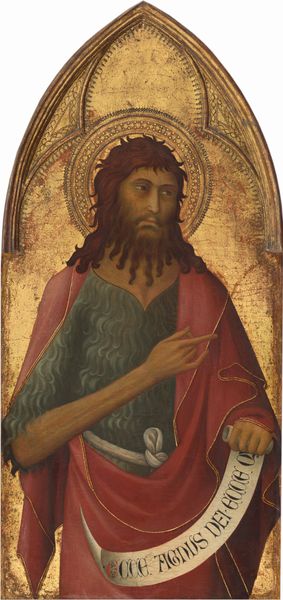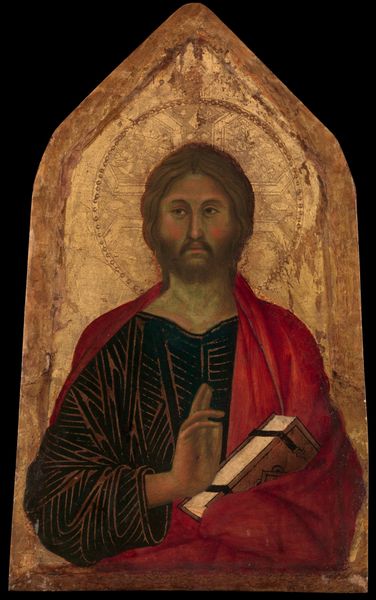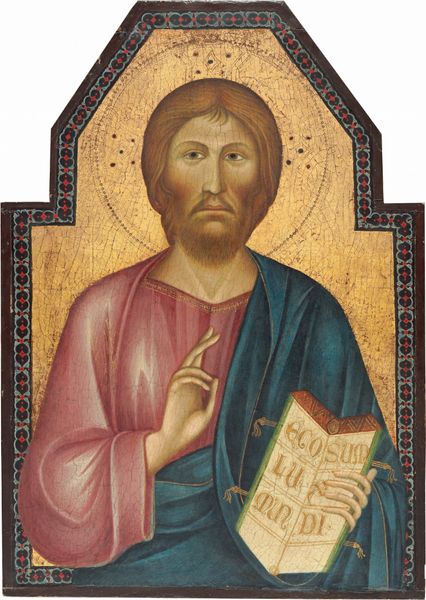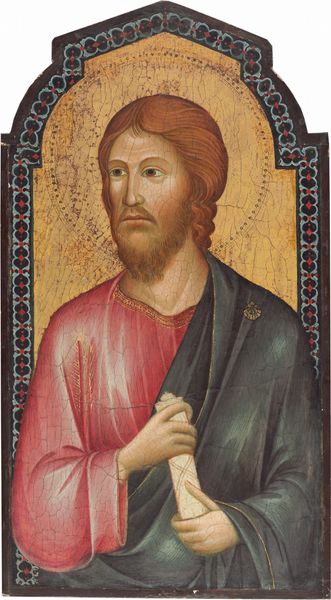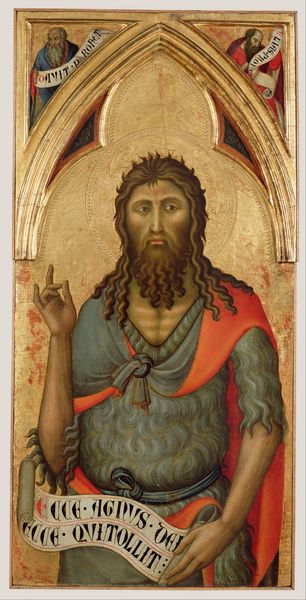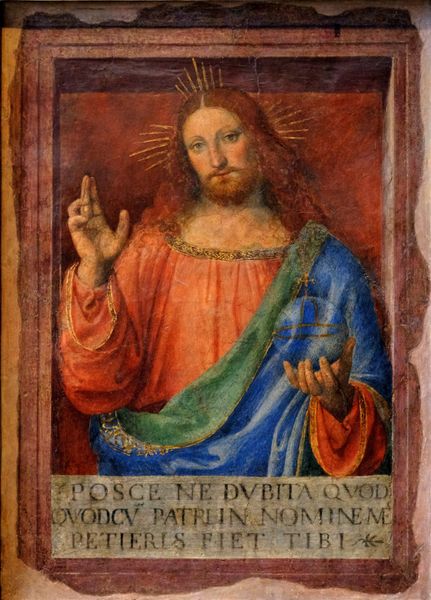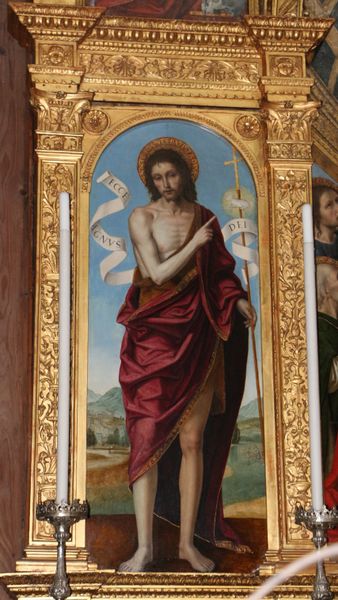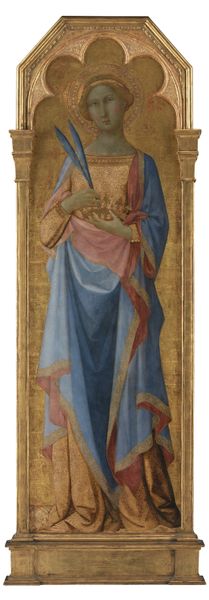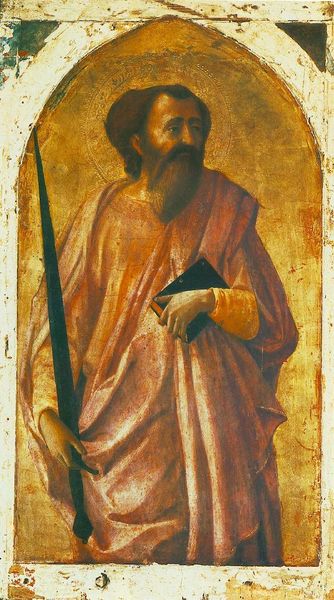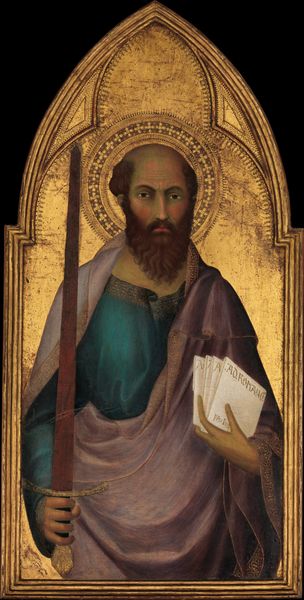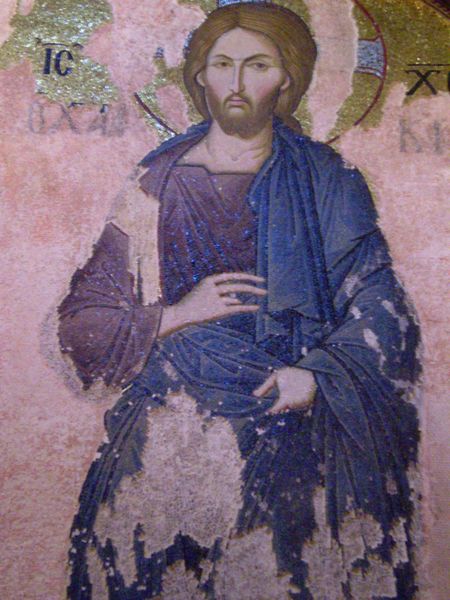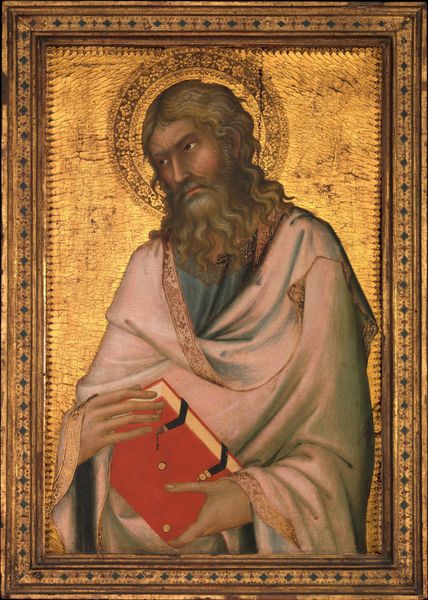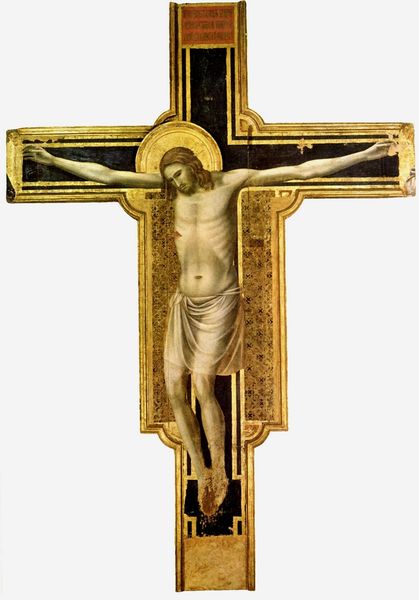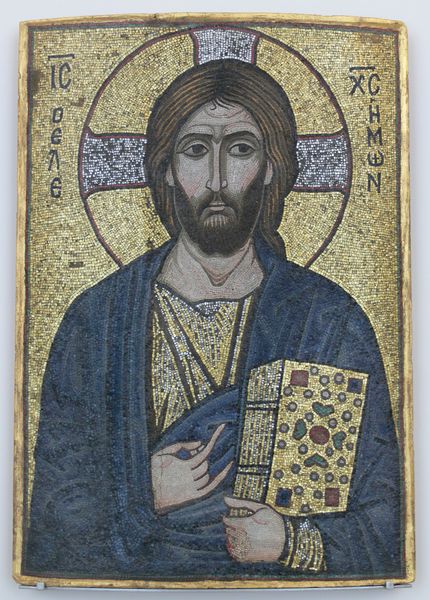
tempera, painting
#
portrait
#
tempera
#
painting
#
figuration
#
jesus-christ
#
12_15th-century
#
history-painting
#
italian-renaissance
#
early-renaissance
Dimensions: 85.5 x 36.6 x 7.2 cm
Copyright: Public Domain
Curator: Take a moment to observe "Christ as Salvator Mundi," a tempera painting attributed to Gherardo Starnina, created sometime between 1404 and 1407. It's currently housed here at the Städel Museum. Editor: The first thing that strikes me is its solemnity. The composition feels so still and contained. Curator: It’s certainly meant to project a sense of divine authority. Considering the function of religious imagery at this time, it really encapsulates the power the church possessed within political structures. Editor: Right, and we must think of its place within society – what its function would have been, and the influence the commissioner had on Starnina. This representation isn’t accidental, of course. Look at Christ's hand raised in blessing while He holds what appears to be a delicate glass orb, and how those choices project a very specific relationship with both the spiritual and secular worlds. Curator: And notice that gilded frame. This wasn’t just a painting; it was an object of devotion, a material manifestation of spiritual power intended to inspire reverence. The setting within a church would certainly affect a viewer’s reception, right? Editor: Precisely. Now, the subject of religious representation is not separate from the work's intersectional relevance. I want to know how women within the religious space engaged with this image. Did they internalize this male figure of power? What nuances existed that countered a patriarchal view? How was it critiqued? Curator: It really provides an avenue to examine devotional practices in relation to prevailing societal norms and artistic conventions. This imagery, of course, impacted gender roles of the era and its significance shifted as those roles themselves evolved. Editor: Indeed. Considering this early Renaissance panel, my immediate connection leads me toward current debates around power dynamics and visual representation. Curator: And my background steers me back toward the concrete influence that institutions and individual actors had during the piece's creation and continued valuation today. Editor: Art acts as an invitation into layered understanding and, frankly, continued questioning of assumptions. Curator: A perfect summary, revealing how art serves as a lens to examine and challenge the world we inhabit.
Comments
Join the conversation
Join millions of artists and users on Artera today and experience the ultimate creative platform.
